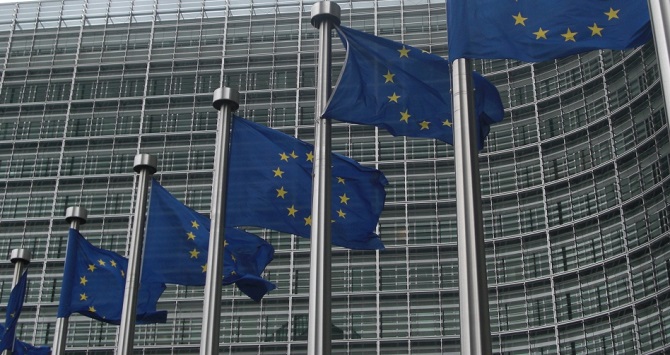
 In July 2015, the European Commission published the Better Internet for Kids benchmarking tool (the BIK map). Elisabeth Staksrud and Dag Grytli, from the Department of Media and Communications at the University of Oslo, present the most important findings of the new report and explain why the EU Kids Online survey stands out from other related research tools, ahead of The Safer Internet Forum taking place on 28-29 October 2015 in Luxembourg.
In July 2015, the European Commission published the Better Internet for Kids benchmarking tool (the BIK map). Elisabeth Staksrud and Dag Grytli, from the Department of Media and Communications at the University of Oslo, present the most important findings of the new report and explain why the EU Kids Online survey stands out from other related research tools, ahead of The Safer Internet Forum taking place on 28-29 October 2015 in Luxembourg.
Today’s digital world offers children across Europe countless opportunities for personal growth and learning. At the same time, this digital world potentially exposes them to risks. We live in a time of rapid technological and social change, and a better, safer internet for children is high on the agenda for policymakers at both the national and European level.
In 2013, the European Commission (EC) launched the study ‘Benchmarking of Safer Internet Policies in Member States and Policy Indicators’ to investigate how these policies are designed and managed across the continent. In the study’s final report, the EC produced the ‘BIK map’ to improve understanding of ‘Better Internet for Kids’ (BIK) policies in EU member states, as well as in Iceland and Norway. Drawing heavily on research carried out by the EU Kids Online network, the map aims to make it easier for policymakers and stakeholders in different countries to share national experiences – both positive and negative – of BIK policies and actions.
More joined-up thinking needed
European countries employ a variety of approaches to design and implement policies relating to the experiences of children online. These approaches usually involve some degree of coordination between different levels of government, as well as with stakeholders from the regional, national, European and international levels.
Among the findings in the report is the acknowledgement that in most EU countries, the areas covered by the BIK strategy involve several ministries, each with different priorities and objectives. This can lead to a ‘silo’ effect where different ministries have different agendas and there is little cooperation and coordination among them. A broader, more joined-up approach is missing, and efforts to coordinate the various parties often rely on informal meetings, the less coordinated nature of which can be of limited value. There are, however, several examples where BIK policies have been coordinated more systematically. For instance, as part of Greece’s national digital strategy 2014-2020, the Ministry of Infrastructure, Transports and Networks, the National Telecommunications and Post Commission and the Ministry of Education co-launched the Digital Greece initiative, which aimed to empower citizens and to improve children’s ICT skills.
Furthermore, across member states, not enough effort is dedicated to collecting new evidence for designing policy. Existing surveys, which are intended to generate new knowledge on children’s online experiences, are run on an irregular basis, while the lack of commonly agreed indicators for children’s use of the web makes international comparison difficult. The report claims that the lack of research in monitoring and evaluating the efficiency and effectiveness of BIK policies is currently the most significant gap in research in all of the countries surveyed. To date, the EU Kids Online survey is the only research tool that provides standardised, comparable data.
The importance of a multi-stakeholder approach to BIK policies
In the report, the level of stakeholder involvement is a key indicator for measuring the quality of policy implementation, as it is seen to represent the level of commitment to the issue in society at large. The findings in the report highlight the crucial role the public sector plays as the driver for non-public stakeholder involvement, as typically countries with high involvement of the public sector also see high involvement of the latter. This confirms an important finding from the EU Kids Online final report, which stressed that ‘a multi-stakeholder approach towards internet safety is the only viable policy approach’.
Industry involvement is considered essential for the implementation of BIK policies, as industry has the capacity to keep up to speed with the pace of technological change. One example of public and private sector collaboration can be found in Spain, where a working group was established to coordinate activity around online child protection. The working group comprised representatives from different government ministries, and from relevant industry and non-governmental organisations.
EU Kids Online’s policy recommendations also stressed the importance of governments formally recognising and supporting the participation of all stakeholder groups. In particular, it is important to involve young people, as well as civil society and user groups who may be less influential than some of the other players. Their voices also need to be heard.
The need for a common approach to measurement – Towards a new EU Kids Online survey
There is clearly room for improvement concerning policy design and governance, in addition to a need for greater coordination between government ministries. In the report, several recommendations are made, aimed at both the European Commission and member states. A common approach to research at a European level on how children use the internet (and the associated risks) is needed in order to develop and implement evidence-based policy. The importance of a common approach to measurement has been a recurring focus of EU Kids Online.
At present, only the EU Kids Online survey provides such a tool, and the report underlines the need for the launch of an additional Europe-wide survey that could provide comparable data across borders. The EU Kids Online network is currently working towards a new comparative survey, scheduled for 2017. Updated to acknowledge changes around technology, knowledge and research context, a new survey would clearly meet the EC’s call for a common approach to measurement, customised for the current media landscape.
By mapping the existing patterns in BIK-related policy work as well as providing a benchmark for future efforts, the report offers an important insight into the state of BIK-related policy work across Europe. Hopefully, the BIK map will be a useful tool in the ongoing work on public policies that protect children from identified risk, whilst enabling them to fully participate in, and explore, the online space.
This article gives the views of the author and does not represent the position of the LSE Media Policy Project blog, nor of the London School of Economics and Political Science.






Hmm, this really enlightening ! I wonder how Internet would affect the development of children in Australia! Come follow our campaign to know more! https://www.facebook.com/ConnectNowOz/ GL